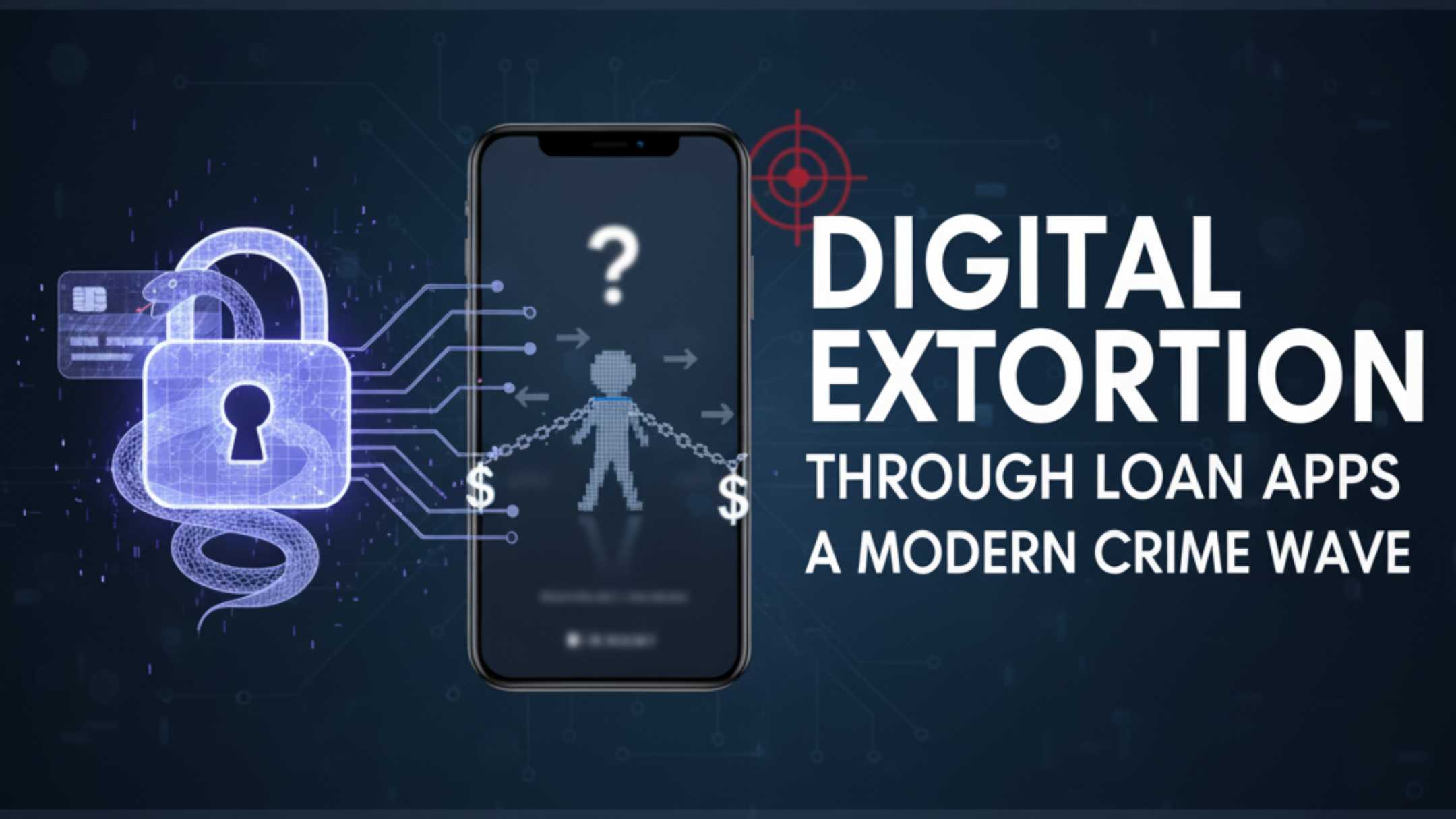· Cybercrime & Digital Safety · 4 min read
Digital Extortion Through Loan Apps: A Modern Crime Wave
Predatory loan apps in India have turned easy credit into a tool for blackmail and digital extortion. Learn how these scams work, what laws protect victims, and how to fight back using legal and cybercrime channels.

In recent years, India has witnessed an alarming surge in digital crimes linked to predatory loan apps. What once appeared as a convenient solution for instant credit has, for many, turned into a nightmare of harassment, blackmail, and extortion.
These unscrupulous loan apps—often operating without Reserve Bank of India (RBI) authorization—have exploited thousands of borrowers, using illegal and coercive tactics to extort money and steal personal data.
How Extortion Begins
The cycle of digital extortion usually begins when an individual downloads a seemingly legitimate loan app offering instant approval with minimal documentation. However, many of these apps are not registered Non-Banking Financial Companies (NBFCs) and function entirely outside the legal framework.
Once installed, these apps demand intrusive permissions—such as access to contacts, photos, messages, and files—under the guise of identity verification.
After disbursing a small loan (as little as ₹2,000–₹10,000), they start aggressive recovery tactics. Borrowers are given unrealistically short repayment periods and charged exorbitant interest rates. When repayment is delayed, the harassment begins.
Blackmail Using Photos and Contacts
The most disturbing element of this scam is how personal data becomes a weapon. These apps manipulate the borrower’s photos or documents, sometimes creating morphed or obscene images to publicly shame victims.
In many cases, these doctored images are sent to family members, colleagues, and friends pulled from the borrower’s contact list—labeling them as “defaulters” or “frauds.”
Victims often face hundreds of threatening messages and calls daily. Recovery agents—sometimes pretending to be police officers—use vulgar language, issue fake legal notices, and spread defamatory content on social media.
This organized digital blackmail has caused severe emotional trauma, and tragically, in some instances, pushed victims toward suicide.
Legal Classification of Digital Extortion
Under Indian law, these actions constitute multiple criminal offences.
Section 384 of the IPC: Defines extortion as intentionally putting someone in fear to obtain money or valuables.
Sections 499 and 500: Cover defamation.
Section 509: Addresses insults to the modesty of women.
Information Technology Act, 2000:
Section 66E penalizes violation of privacy.
Section 67 punishes publishing obscene material online.
If a loan app operates without NBFC registration or a licensed lending partner, it violates the RBI’s Digital Lending Guidelines (2022).
These offences are cognizable, meaning police are legally obligated to act immediately when a complaint is filed.
FIR and Complaint Process
Victims should act swiftly to safeguard themselves and others.
Collect all evidence — screenshots, call logs, app details, and messages.
File an FIR at the nearest cybercrime police station under relevant IPC and IT Act sections.
Alternatively, file a complaint on the National Cyber Crime Reporting Portal: www.cybercrime.gov.in. Mention that it involves “financial fraud and cyber extortion.”
Report the app to the Google Play Store or Apple App Store for policy violations.
Alert the RBI’s Sachet Portal (sachet.rbi.org.in) to flag unregistered lenders.
Victims can also seek legal aid or consult cybercrime lawyers to ensure swift action and request takedowns of circulated private content.
Success Stories: Victims Fighting Back
Despite the fear and stigma, several victims have fought back courageously and helped expose these rackets.
In 2022, Hyderabad Police dismantled a major Chinese-run loan app syndicate that had extorted crores from Indian borrowers. Several arrests were made, and the apps were permanently banned.
Similarly, Maharashtra Cyber Police have tracked digital footprints, arrested recovery agents, and helped victims restore their dignity.
Continuous RBI advisories and public awareness drives now urge users to download only RBI-registered NBFC apps and deny unnecessary permissions to unfamiliar apps.
Conclusion
Digital extortion through fake loan apps is not just a financial crime—it’s a violation of privacy, dignity, and basic human rights.
While India’s cyber laws and RBI guidelines are evolving to combat this menace, public awareness remains the strongest line of defense.
Before borrowing, always verify the legitimacy of lending apps. And for those already trapped—help is available. By taking legal action and reporting the offenders, victims can reclaim justice and help prevent others from falling prey to this modern digital crime wave.
Short FAQs
How can I identify a fake loan app?
Check if it’s listed under RBI-registered NBFCs and avoid apps demanding unnecessary access permissions.Where can I report a digital extortion case?
File a complaint on the National Cyber Crime Reporting Portal — www.cybercrime.gov.in.What laws protect victims of loan app harassment?
Sections 384, 499, 500, 509 of IPC and 66E, 67 of IT Act cover such offences.Can the police act against fake loan apps?
Yes, these are cognizable offences—police are bound to take immediate action upon complaint.How can users prevent such scams?
Download only verified apps, read permissions carefully, and never share sensitive data with unverified lenders.Disclaimer
The information shared in this blog is for general awareness only. Every individual’s situation may differ, and the actual process or outcome can vary based on personal and legal circumstances.

 (Stopharassment) Chasing Dues the Right Way Understanding Legal Debt Recovery.CEsdngE0.jpg)
(Stopharassment) Trapped in a Costly Loan_ Here's a Realistic Way Out.D8AJttjX.jpg)
.CQX6XYsF.jpg)